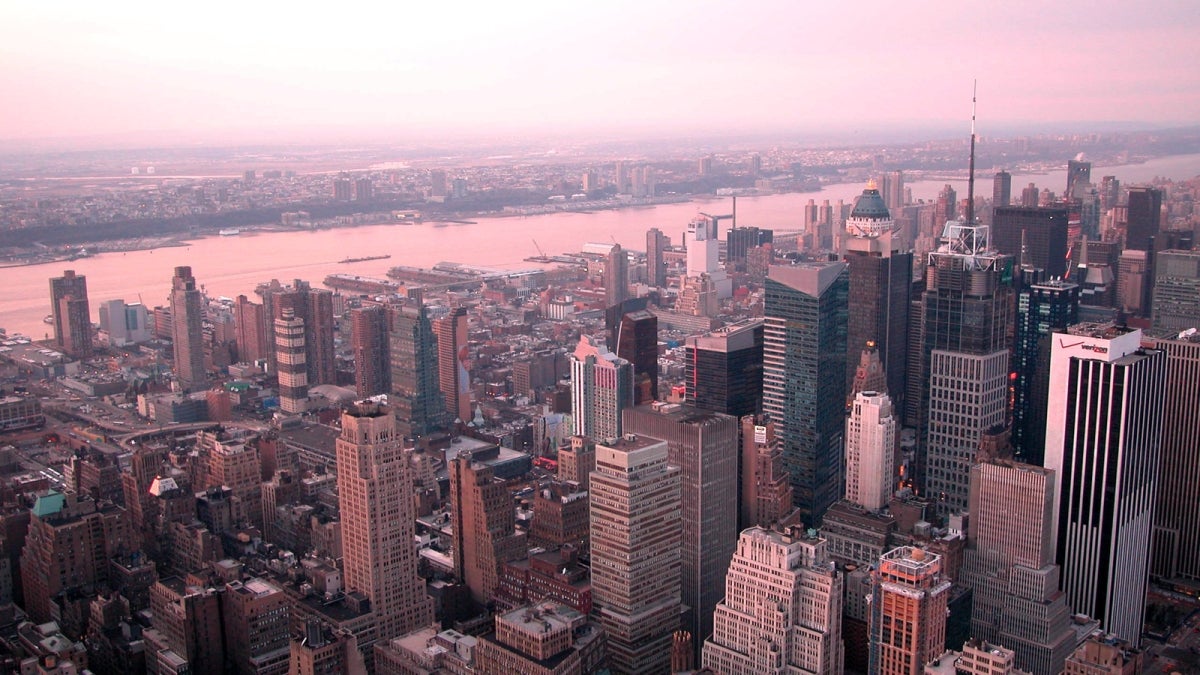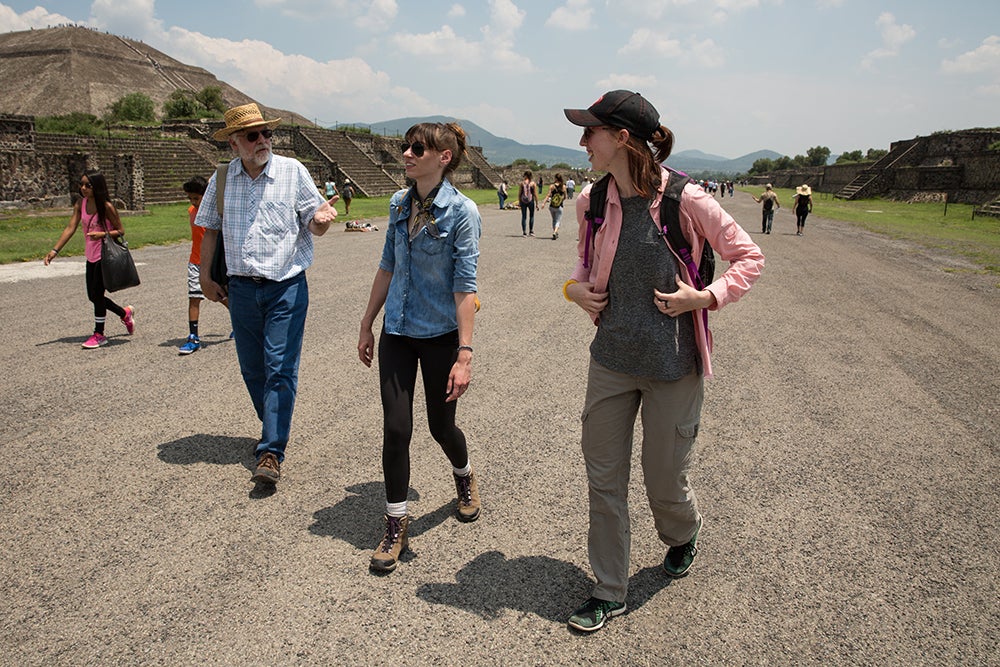Mih-tutta-hang-kusch, a Mandan village on the upper Missouri River in the 1830s.
Leicester, a large town in medieval England, 1300.
Manhattan, 2016.
What do they all have in common? What bridges the ancient and modern worlds, villages and global capitals?
A group of interdisciplinary scientists, including four with ties to Arizona State University, analyzed census records, maps and archaeological studies of medieval cities across western Europe to show that their populations grew at the same rate as modern cities and prehistoric New World settlements.
It’s the first study to document these patterns using historical records. The paper was published this month in PLOS ONE.
So why is this the case? What processes are common to people living together in numbers? What benefits and costs have remained the same in the Southwestern cliff dwelling, the Mayan city and the medieval cathedral town?
Researchers say social and economic outputs get multiplied when cities get bigger. A city twice as big as the next one doesn’t have twice as much wealth; it has more than twice as much wealth, said archaeologist Mike Smith, a professor in the School of Human Evolution and Social Change who is a member of the working group.
“So in bigger cities something is going on that doesn’t go on in smaller cities,” Smith said. “It’s not just that people are learning something different. They’re producing things — more wealth, more knowledge. You have these regular relationships. You can predict these things mathematically. They’re found in the modern world. They’re found around the world. They’re found in ancient times. They’re found in historical times. There’s something basic and fundamental about people living in cities, and it’s hard to put a finger on exactly what that is. We’re just trying to figure it out.”
Rudy Cesaretti, a grad student in archaeology at ASU, was the paper’s lead author.
Based at the University of Colorado Boulder anthropology department, the Social Reactors Project is comprised of economists, physicists, and archaeologists. Their goal is to identify common properties of all human settlements, and how they generally grow and decline.
“We refer to human settlements as social reactors due to their role in concentrating and accelerating social interactions and their outcomes in space and time,” the group’s statement reads. “This view derives from urban scaling research and the discovery that some emergent properties of modern cities are also apparent in pre-modern and even non-urban settlements.”
Smith explained settlement scaling research.
“It gets down to how people interact within cities, how people interact with one another,” he said. “When you have more people, you have more interaction. When you have denser cities, you have more interaction. You get the similar pattern you get with modern cities. The number of rock bands in a city. The city is twice as big. You’d expect to have twice as many rock bands. If a city is twice as big, it has more than twice as many rock bands than smaller cities. Why is that? There’s something about people in bigger cities; there’s more going on. There’s more interaction. They need more rock bands per person. For me, a lot of this is surprising and amazing.”
The research could tell how cities grow and shrink. One of the things that’s most important is that as many people as possible interact with each other socially, according to Smith. The key concept is called energized crowding. It refers to the social effects of large numbers of social interactions in a city (or town or village). Energized crowding generates a lot of outcomes, which can be mathematically predicted.
“Whatever this energized crowding creates, whether it’s more rock bands, more wealth, more patents,” Smith said. “That kind of thing is generated by people interacting and talking and learning and getting together in cities. ... Cities are ‘social reactors.’ A greater output comes out, somehow.”
ASU professor Mike Smith (left) walks down the Avenue of the Dead in the ancient city of Teotihuacan with museum studies graduate students Kate Rush and Lisa Gallagher. Photo by Ken Fagan/ASU Now
Smith initially thought scaling theories worked in modern cities because of modern economies. But it’s not dependent on capitalism; it’s dependent on people interacting in a built environment. This works regardless of economies. For instance, wage labor and land as a commodity, both staples of capitalism, didn’t exist in medieval cities.
He looked at census records from medieval towns taken 10 to 15 years apart. “The turnover is like 50 percent,” he said. “It’s incredible. These aren’t people bound to the land who never moved. They moved around quite a bit. And they moved into cities.”
Non-related people living together in groups is a distinctive Homo Sapiens trait, from hunting camps to Tokyo. The group’s goal is to form a theory of human aggregation, said Jose Lobo, a member and associate research professor in the School of Sustainability.
“Our goal is to identify common properties of all human settlements, and general processes of growth and decline, in a framework that accommodates both regularity and contingency,” Lobo said. “We are developing a framework that frames all human settlements, from hunter-gatherer camps to modern megacities, as concentrations of people, things, energy and information in space and time.”
Medieval cities can teach us quite a bit about modern cities, said archaeologist Scott Ortman of the University of Colorado Boulder. Ortman earned his doctorate at ASU. The regular economies of scale across such a wide variety of societies suggest that the forces driving them are strong and predictable.
“Policies that promote more livable cities should lead to a wide range of social, economic and environmental benefits over the long term,” Ortman said.
The work done by the group dissolves the boundary between past and present and turns the archaeological record into “a compendium of long-term experiments in social dynamics,” he said. “This is important because it provides a new way of leveraging collective human experience in our efforts to build a better tomorrow.
“I think the inexorable increase in the scale of human settlements over time shows that, on an evolutionary level, human beings benefit in open-ended ways from getting along with strangers,” Ortman said. “On balance, the more people interact the better off everyone becomes.”
The study was funded by a grant from the McDonnell Foundation to Scott Ortman at Colorado; and the Arizona State University – Santa Fe Institute Center for Biosocial Complex Systems. Physicist Luis Bettencourt of the Santa Fe Institute is a member of the group.
More Arts, humanities and education

Grand Canyon National Park superintendent visits ASU, shares about efforts to welcome Indigenous voices back into the park
There are 11 tribes who have historic connections to the land and resources in the Grand Canyon National Park. Sadly, when the park was created, many were forced from those lands, sometimes at…
ASU film professor part of 'Cyberpunk' exhibit at Academy Museum in LA
Arizona State University filmmaker Alex Rivera sees cyberpunk as a perfect vehicle to represent the Latino experience.Cyberpunk is a subgenre of science fiction that explores the intersection of…

Honoring innovative practices, impact in the field of American Indian studies
American Indian Studies at Arizona State University will host a panel event to celebrate the release of “From the Skin,” a collection over three years in the making centering stories, theories and…

